4th October 1940
Casualties 
Air attacks with
bombs and torpedoes developed in the early evening of the 14th as Admiral
Cunningham’s Mediterranean Fleet proceeded to Alexandria. Although other ships gave and
received the aircraft alarm, which was broadcast as standard practice on the
Fleet wave-length, this message never reached Liverpool’s bridge. At
cruising stations, (which meant that half her crew was closed up) and with her
Remote Control W/T Office (R.C.O.) manned by three telegraphists,
one of whom should have been monitoring the Fleet wave, no alarms were given,
and no defense was put up as two Italian torpedo-bombers - slow moving and low
flying - came in to attack. At 1850 Liverpool was hit on the starboard bow, under the
communications ratings’ mess deck.
|
The R.C.O had been thrown into darkness and confusion (later to draw criticism) by the explosion,
and so Chief Yeoman Price had to shout down to the Main W/T Office for Ldg. Tel. Nelson to send the three letter call which told
‘ship making signal has been torpedoed and requires immediate assistance’, a
call which was to be received by thirty-six stations, one as far away as St.
John’s, Newfoundland. The signal was sent on 7500 kc.
M.W. using a type 48 transmitter. It was picked up in Malta, and identified immediately
as having been sent by the ‘hand’ of `Joe’ Nelson. The telegraphist
at Malta was George Lofthouse, who had trained alongside Nelson and who had
until very recently been a member of Liverpool’s crew.
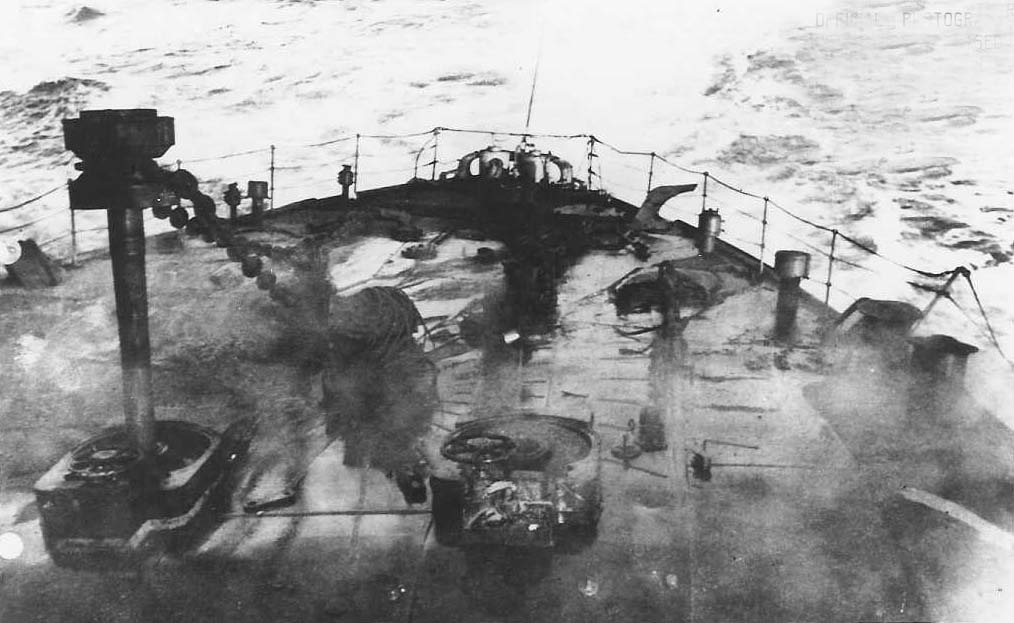 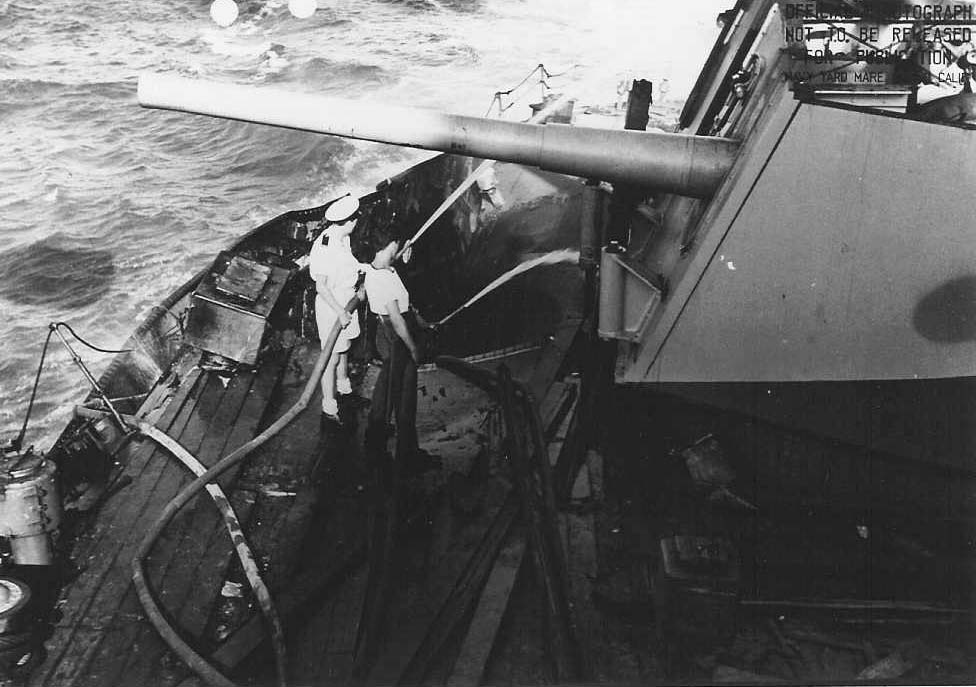
|
|
Severe structural damage was sustained and the aviation spirit tank damaged. Immediately, the
whole ship became filled with very dense fumes and orders were given over the
warning telephone forbidding smoking and naked lights. Nevertheless the vapour which had permeated the fore end became ignited
about twenty minutes later. The resulting explosion severely damaged the fore
end and blew the roof off ‘A’ turret.
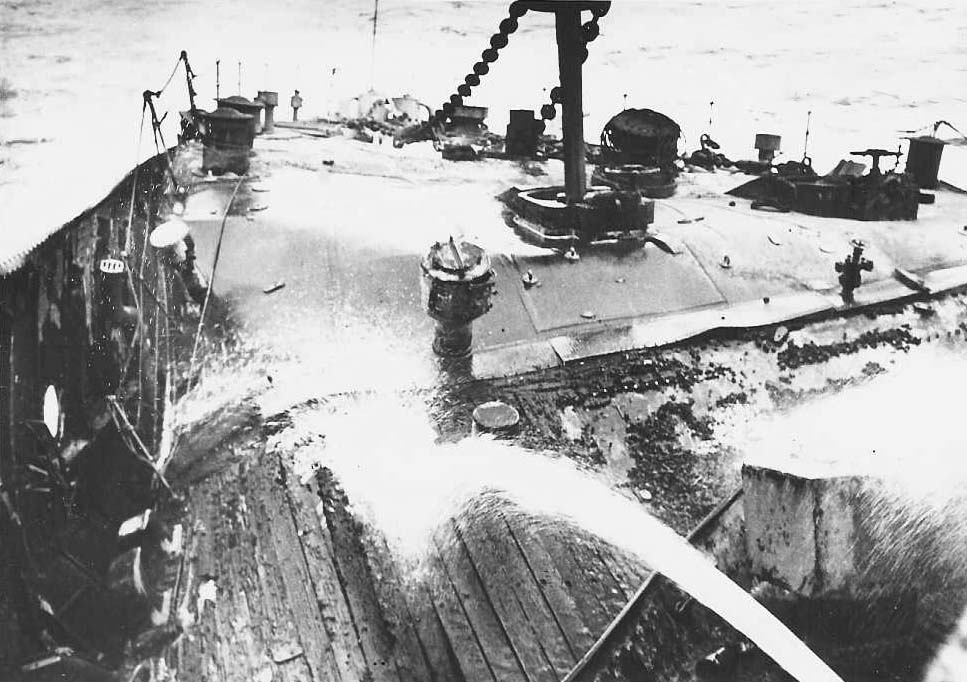 
|
Liverpoolcarried Walrus aircraft for reconnaissance and about 5,000 gallons
of high octane spirit had been stored in a tubular tank fitted under the bows.
Another tank contained motor boat petrol. Regulations which were current had
stated that, when proceeding to sea, these tanks were to be only 95 per cent
full, and that the compartment was to be kept flooded. When the torpedo had hit
the water could not compress, but the 5 per cent empty capacity in these tanks
had been sufficient to cause them to rupture.
| |
Ldg. Smn. Whiting had returned to `B’ turret
to fetch his gas mask and life-belt which he had left in the centre gun layer’s
position. Then, climbing over the bridge, he recalls the explosion lifting the
teak decking up and into the sea, plunging deep and then being shot back again
into the air. Blown overboard but uninjured by this blast was Boy Smn. Ricketts. He and a handful of others were picked up
some twelve hours later by the destroyer
|
The R.C.O had beenthrown into darkness and confusion (later to draw criticism) by the explosion,
and so Chief Yeoman Price had to shout down to the Main W/T Office for Ldg. Tel. Nelson to send the three letter call which told
‘ship making signal has been torpedoed and requires immediate assistance’, a
call which was to be received by thirty-six stations, one as far away as St.
John’s, Newfoundland. The signal was sent on 7500 kc.
M.W. using a type 48 transmitter. It was picked up in Malta, and identified immediately
as having been sent by the ‘hand’ of `Joe’ Nelson. The telegraphist
at Malta was George Lofthouse, who had trained alongside Nelson and who had
until very recently been a member of Liverpool’s crew.
| 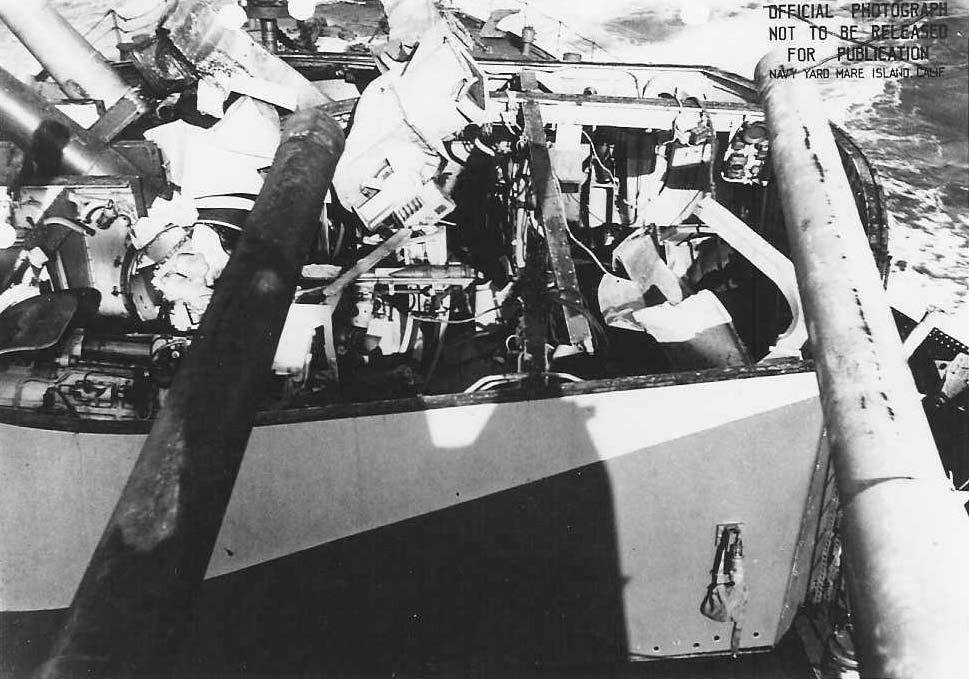 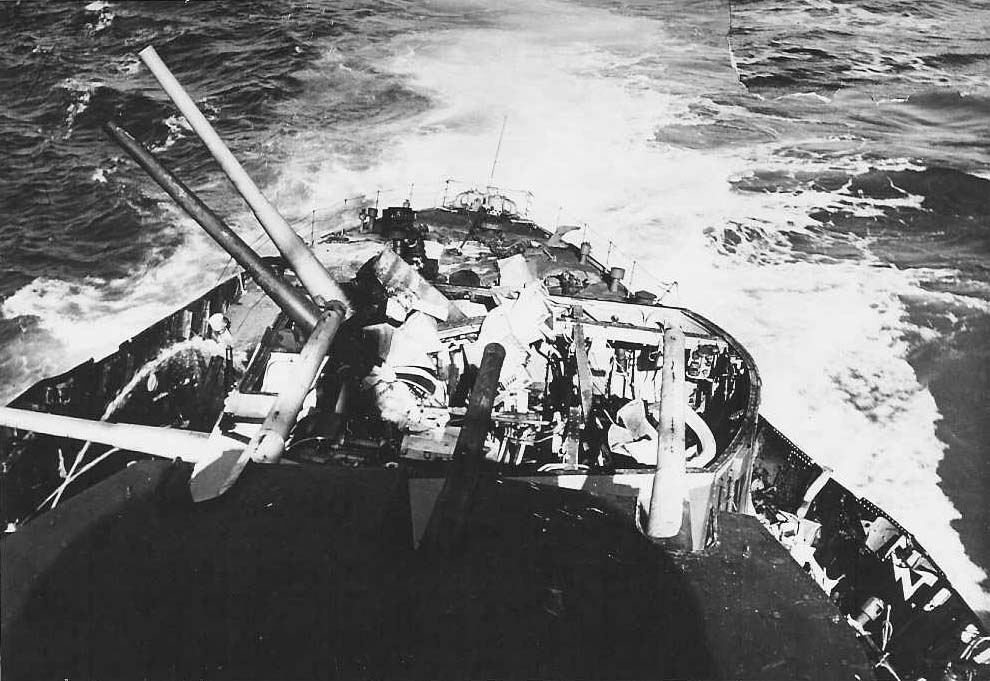
|
|
‘Standby to abandonship’ was piped over the warning telephone, while another message came from the
bridge for two telegraphists to remain in the Main
Office, until the situation became more clear. It was
not expected that the ship would be lost, but most of the hands were to spend
an uncomfortably cold two hours on the quarterdeck, after which time Captain
Read decided that the forward magazines were safe and that the bulkheads were
likely to hold. C.P.O. Tel. Steele and Ldg. Tel.
Nelson spent this time more comfortably in passing a few signals and hearing
that Gloucester, Orion and a number of destroyers were closing at speed.
 
|
When Warrant Engr. Corfield had reached the
upper deck immediately following the explosion, he had found flames at mast
height. (It was later learned that they were seen from a distance of over 20
miles.) Realising that steam would be required to
serve the fire pumps, he returned below with two stoker volunteers to flash up
the after boilers. The forward boiler room and the engine room were then
re-occupied and fire-fighting started. It was to continue throughout the night.
| |
|
Gloucester closed, Rear-Admiral Renouf signaled,
‘What is the state
of your forward magazines?’
to which Captain Read replied,
‘Have no
information that forward magazines are flooded.’
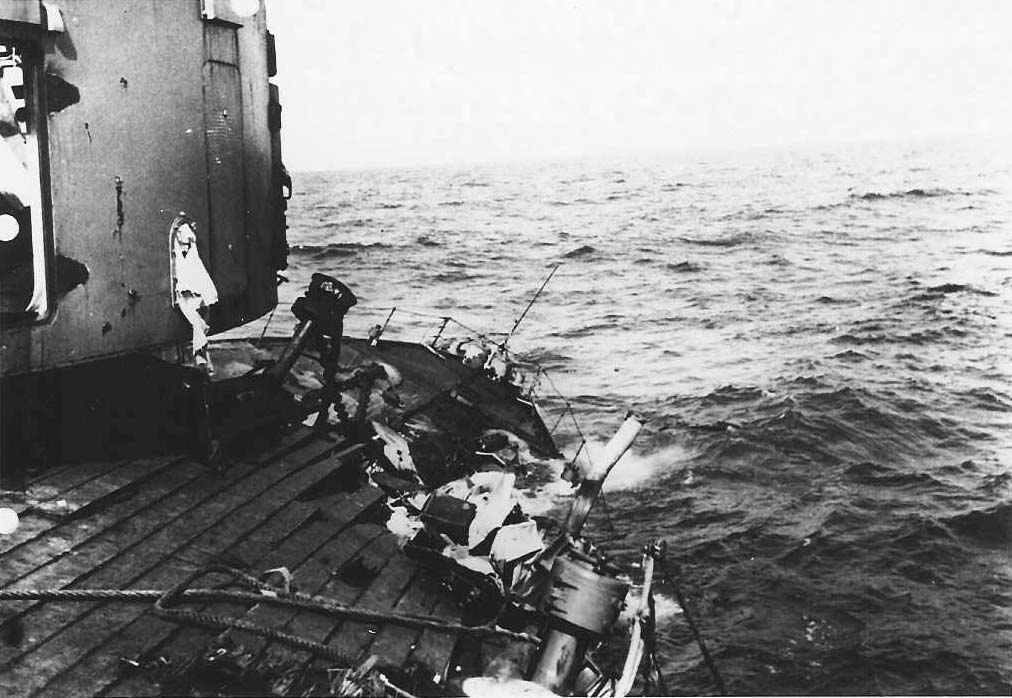 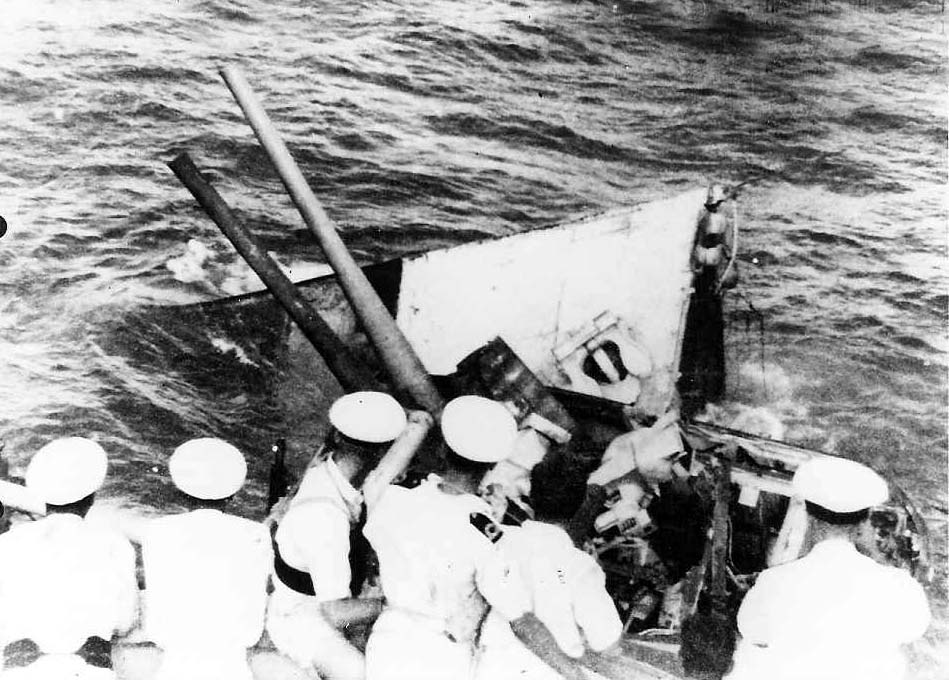
|
| | |
The explanation for this reply was that although flooding had been carried out, the mechanical couplings
to the control valves were damaged, and so no indication had been passed to the
bridge. In consequence of Liverpool’s signal the risk of a major explosion was
believed to be real. For this reason Gloucester
stood off, ten miles distant, while
Orion continued to close; but the long association of Liverpool and Gloucester,
and Rear-Admiral Renouf’s decision to stand off, did
nothing to alleviate the latter’s unpopularity among Liverpool’s company.
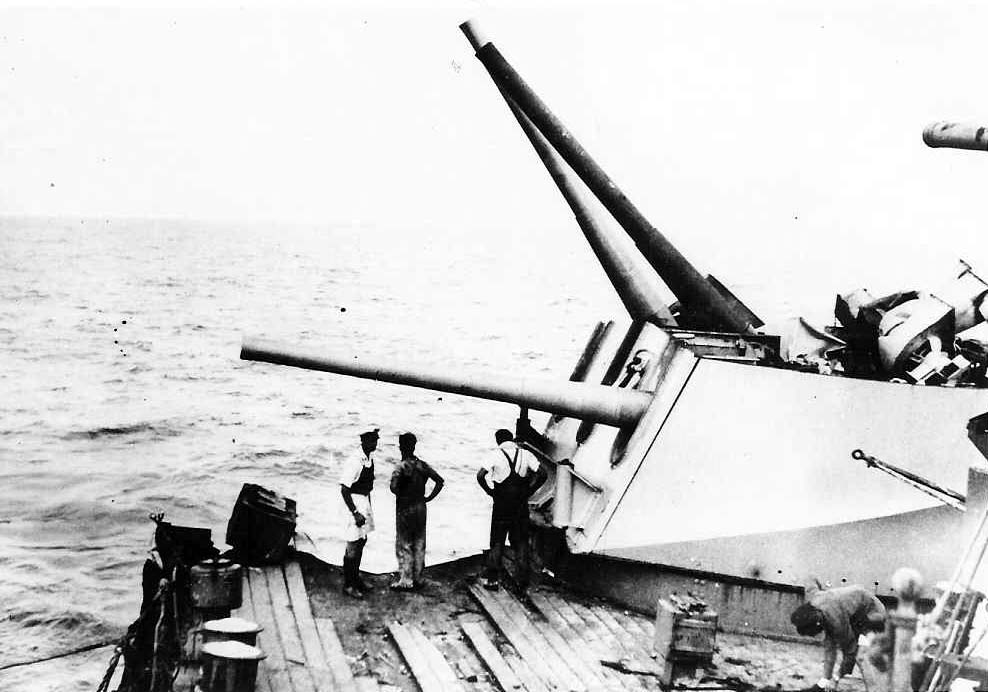
|
Liverpool’s Walrus aircraft and motor cutter had been among the many items
jettisoned before she was taken under tow, stern first, by the cruiser Orion. This was a difficult task with
the mangled bows acting as a drogue and a rudder. Although the break in the bow
was forward of the ship’s armoured citadel, the
bulkheads were thin and the grinding noise from the swinging bow added to the
tension. Ldg. Smn. Coffin
and others had spent some time in attempting to secure the flapping starboard
side with steel hawsers, but without success. The night was brilliantly moonlit, and there were some hours of anxiety with the
possibility that the Italians would try to finish off Liverpool and perhaps Orion as well.
| 
|
| |
The next morning was
fine and the tow proceeded at 8 knots. The gentle swell took the ship in one
direction and its bows in the opposite, and every time it rolled there was a
discharge of oddments from a wrecked storeroom below. Many items - brooms and
broom-handles - were there for the taking by destroyers giving protection. They
fished continuously with their long poles and nets!
After 100 miles Orion’s tow parted, but the hawsers were
re-passed during the forenoon of the 16th. At this time, the damaged bows
(approximately forty six feet) twisted round to starboard, fell below the water
line, but refused to part from the keel plate. The result was a draft of about
ninety feet which not only made towing difficult, but would have caused
problems in the approach to harbour. Fortunately,
during this same forenoon and towards the end of the two-day tow, it finally
broke off and sank. This made towing easier and entry into Alexandria possible. Orion and Liverpool
arrived at Alexandria
on the 16th, escorted by Dainty and Decoy. Liverpool’s main engines
had been used continuously to assist
Orion throughout the tow.
|
A Court of Inquiry sat to investigate the communications failure which had allowed the attack on Liverpool to be
made without warning. It was felt by many that the leading hand in the R.C.O.
was made to bear a disproportionate burden of responsibility. He had come to Liverpool from Gloucester (a direct swap with Ldg.
Tel. Lofthouse) and was relatively inexperienced. It
was discovered that one of the R.C.O. telegraphists
had taken the red air alarm over the Fleet wave, but had received the message
in a mutilated and incomprehensible form. The decision not to pass this on to
the bridge was held to be the crucial mistake and this (perhaps) allowed other
failings to be overlooked.
| 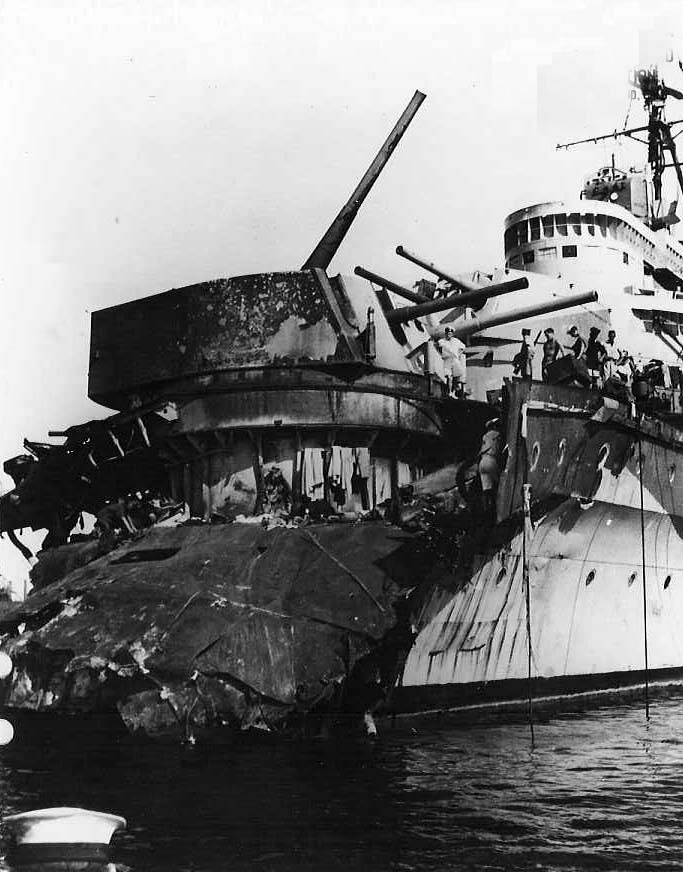 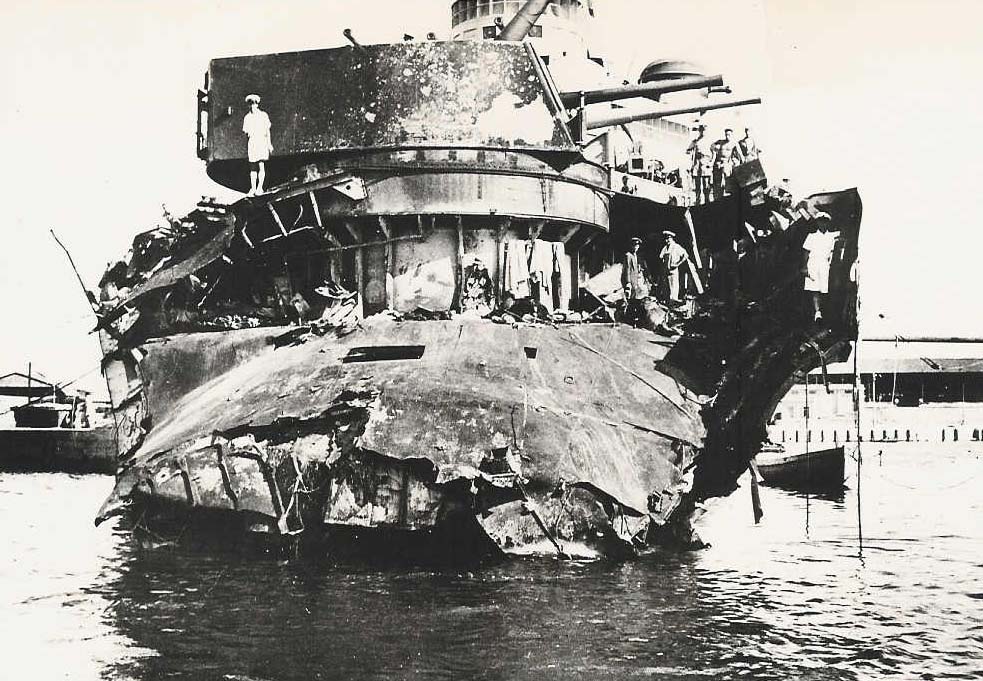
|
| |
Repairs at Alexandria, including the fitting of a false bow (without anchor cables)
constructed entirely by the use of hand hammers and hot rivets, and filled with
concrete, took until April 1941. Two quad pom-poms and two
quad 0.5 mg’s were removed, before Liverpool
left for Mare Island,
San Francisco
to complete repairs.
| | 











